How to speed up my modeling?
-
HI, I have been working on a Family room model and it is getting pretty detailed size is, 33.2 mg. As it gets more and more detailed it seems each action I take is slower and slower.... I have seen threads out there giving tips on cleaning up registries etc... to speed up the modeling experience but cant find anything on the subject right now...
I have gone to Model Info and purged un-used. My computer is plenty fast with a 3 gig graphics card, 16 gigs of ram and a ssd, so I dont think it is my computers fault.
I am assuming one thing that will help speed up my model would be to turn off layers that I am not using... which I will do, but I am pretty sure I am missing some other things that could help me speed things up as well... any help or insight into this would be much appreciated.
-
Have you turned off shadows, and do you work in "Monochrome", and in a default line style? Any visual "effects" slow you down...
-
Some more pointers here.
https://sites.google.com/site/sketchupsage/faster/geometry -
@mrossk said:
Have you turned off shadows, and do you work in "Monochrome", and in a default line style? Any visual "effects" slow you down...
This is what I love about this forum! Thanks so obvious but I was working with shadows on and in shaded mode! What a big difference! I am going to look into the other suggestions as well as I am sure there are additional things to speed things up, but this was huge. Thanks for not assuming I knew this.

-
@shannakae said:
@mrossk said:
Have you turned off shadows, and do you work in "Monochrome", and in a default line style? Any visual "effects" slow you down...
This is what I love about this forum! Thanks so obvious but I was working with shadows on and in shaded mode! What a big difference! I am going to look into the other suggestions as well as I am sure there are additional things to speed things up, but this was huge. Thanks for not assuming I knew this.

That's why other relative beginners are often more helpful than experts. It's easy to forget what it's like being a beginner! Thankfully I'm a relative SketchUp newbie too (compared to the geniuses you find here). Anyway, I'm glad it helped.
-
Texture size can bloat a file.
Use Goldilocks v2 to analyse your model.
-
Using components effectively can help in many ways.
Not only does it help speed up the program it speeds up the modelling itself.
Plus you can work on components as a separate model and just update them in your full model. -
@box said:
Using components effectively can help in many ways.
Not only does it help speed up the program it speeds up the modelling itself.
Plus you can work on components as a separate model and just update them in your full model.That is exactly how I work on my larger models, like the external reference system AutoCAD uses. I have a main model but save out my components into separate files. Work on them individually and reload them. Plus I work in monochrome until I need to texture. It is the last job to do with the models before rendering.
-
@tobobo said:
@box said:
Using components effectively can help in many ways.
Not only does it help speed up the program it speeds up the modelling itself.
Plus you can work on components as a separate model and just update them in your full model.That is exactly how I work on my larger models, like the external reference system AutoCAD uses. I have a main model but save out my components into separate files. Work on them individually and reload them. Plus I work in monochrome until I need to texture. It is the last job to do with the models before rendering.
I have a few components imported this way... but I dont think i have been doing it right... I think i have been editing them inside of my model. I think what you are saying is to create or edit them in their own model space then update my main model? How does that work? Do I have to re import the component when after I edit it? How do I "up date" it? Thanks!
-
33.2 mb is huge for a single room. I have an entire home that is 5300 sf on the 1.4 acre property that is the same size. As stated above, use groups and components for all entities. With that card, you shouldn't have to work in monochrome mode. I never do. Shadows of course off when working really does make the difference.
-
@shannakae said:
I have a few components imported this way... but I dont think i have been doing it right... I think i have been editing them inside of my model. I think what you are saying is to create or edit them in their own model space then update my main model? How does that work? Do I have to re import the component when after I edit it? How do I "up date" it? Thanks!
When you create the component right click and select 'save as' on the context menu.
Then when you have updated it separately, go to your main model and right click on the component again, on the context menu there should be an option 'reload'.
You will be asked to select which file you want to use to reload with.
Select the component and click ok.
The component in the model should update, the time it takes to reload will depend on the size of the file your are loading. -
Well, here is my first model render with Vray. I have been playing with sketchup for a few years now... but just in the past month committed myself to becoming a sketchup expert. I am already seeing an increase in my interior deign projects due to my rendering/modeling skills. Very worth it. Just wanted to show it off as I have been working pretty hard on it. : ), I could not have gotten this far with all of your help, so thanks!
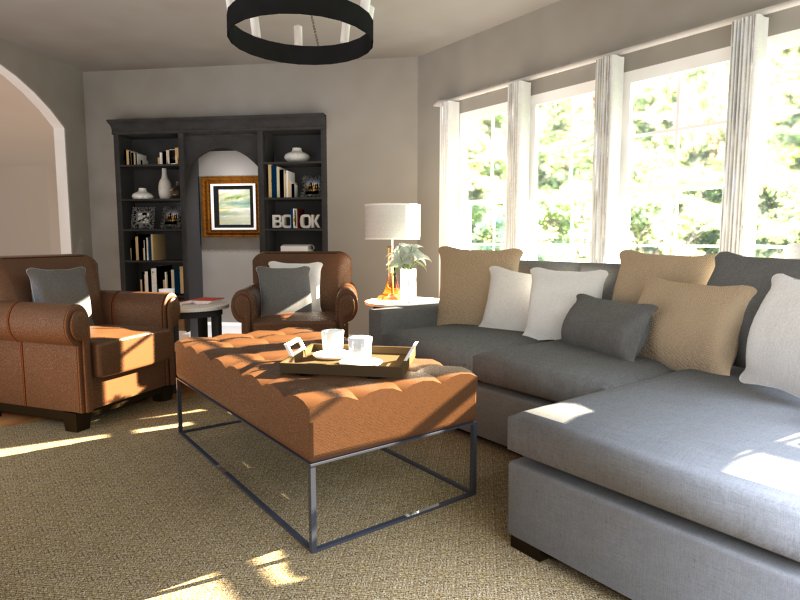
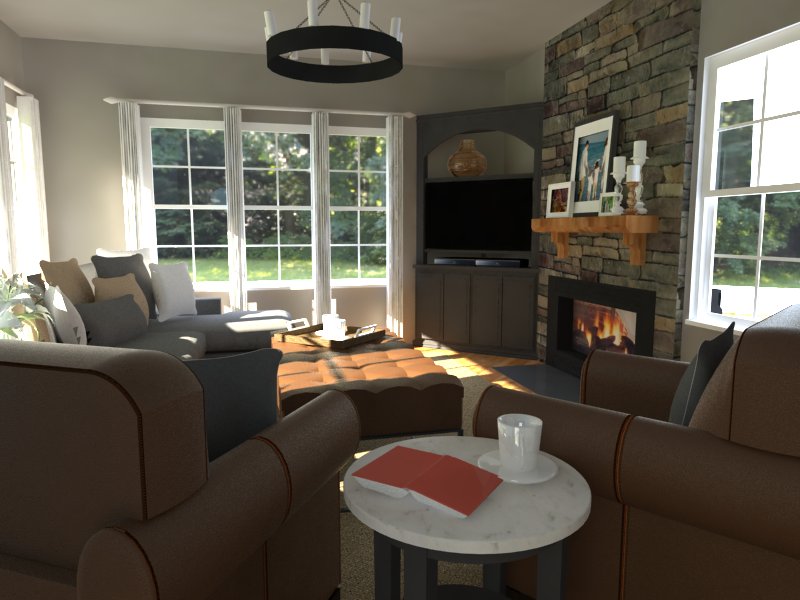
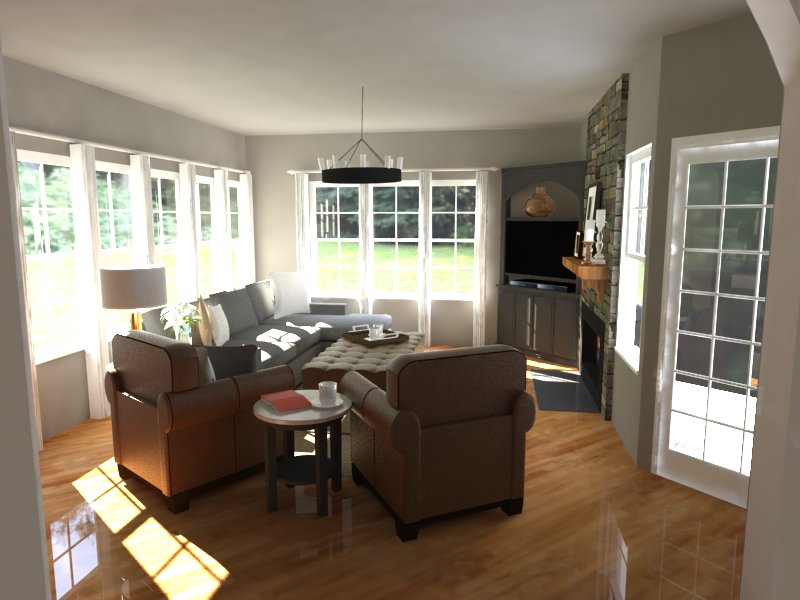
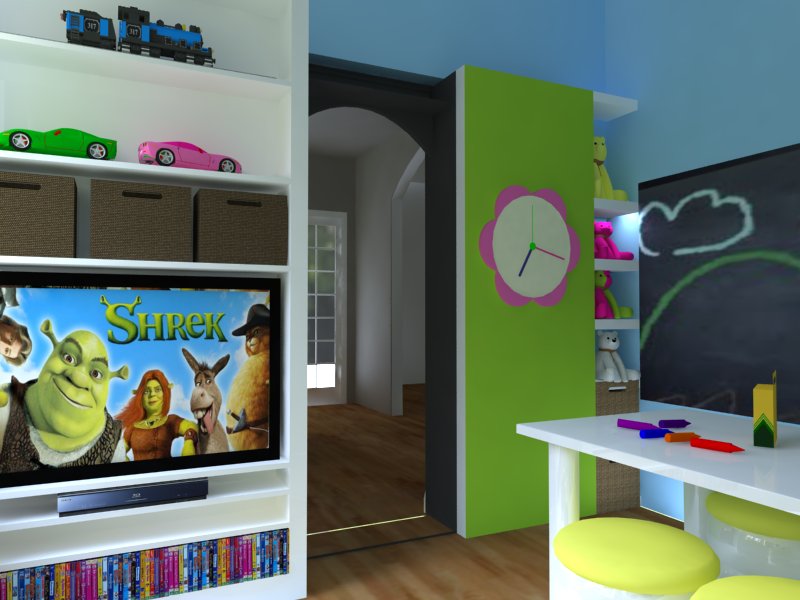
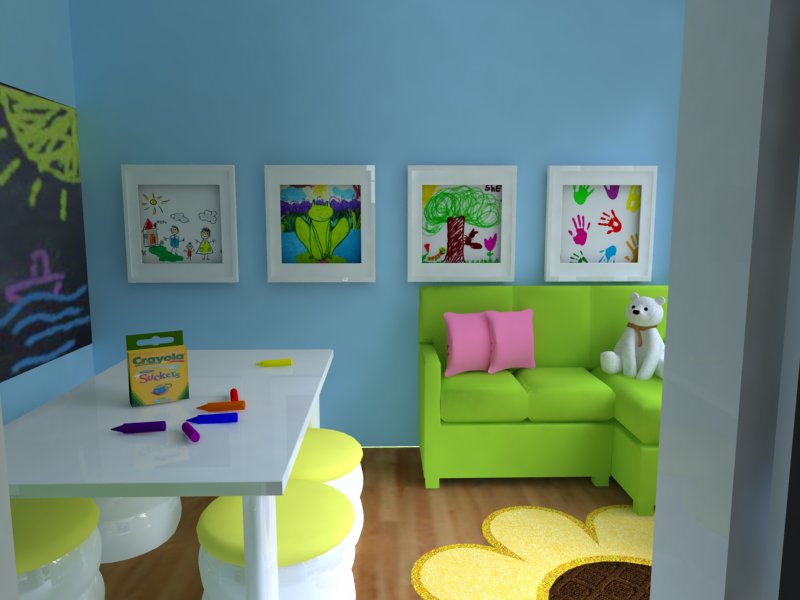
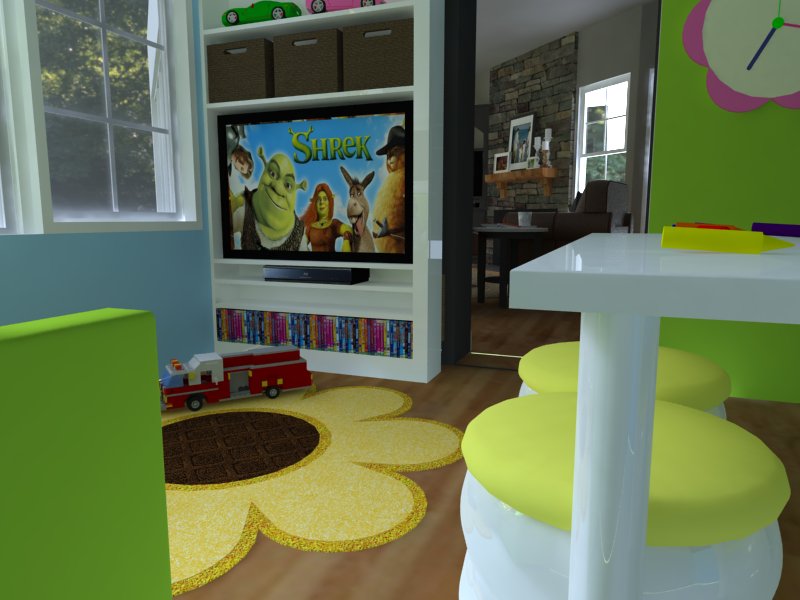
-
Beautiful Work! I'm guessing the drapery & the pillows are taking quite a bit of memory.
-
Whoa, looking good there. First V-ray render? Maybe you should slow down

-
@pbacot said:
Whoa, looking good there. First V-ray render? Maybe you should slow down

Ha, no way im slowing down, having to much fun!

-
@unknownuser said:
Beautiful Work! I'm guessing the drapery & the pillows are taking quite a bit of memory.
Thanks!, everything is super fast now that i turned off shadows.
-
One way to look at things using your interior design background
Build in a sensible structure to your project:
Start with an overall house design file, a simple ground plan to give you a full layout.
Create the individual rooms that you will be working on as files/components.
Work on the individual parts and save them as components.
You can work on each room or parts of rooms etc etc
Then on your overall project file you can bring them all together to render.
Another huge benefit of this sort of structure is if something bug splats it's not the whole file.
You can work this sort of hierarchy down through many levels, it all depends how detailed you want to go. eg: you could have individual tassels on individual cushions on different sofas in different rooms.......
P.S. you may need to sort out your Local Component Library if you haven't done so already. That is telling SU where you want to keep the files.
-
@box said:
One way to look at things using your interior design background
Build in a sensible structure to your project:
Start with an overall house design file, a simple ground plan to give you a full layout.
Create the individual rooms that you will be working on as files/components.
Work on the individual parts and save them as components.
You can work on each room or parts of rooms etc etc
Then on your overall project file you can bring them all together to render.
Another huge benefit of this sort of structure is if something bug splats it's not the whole file.
You can work this sort of hierarchy down through many levels, it all depends how detailed you want to go. eg: you could have individual tassels on individual cushions on different sofas in different rooms.......
P.S. you may need to sort out your Local Component Library if you haven't done so already. That is telling SU where you want to keep the files.
Great stuff! I have been concerned about just this... I am working on the entire house. I am designing it room by room and do need to be able to see the other connected rooms when I render but dont want to be working in a new room with all the materials and other components that are in the other spaces! Great workflow... I think I understand what you are getting at and it makes so much sense. I am going to go back to my model and try separating it out like this and see how it goes... I think that will make a big difference and you are right it is pretty stressful working on the same file... not to mention it gets rather large...
-
If you look at your model as if it's real you'll tend to construct it better. Plug-ins, 3Dwarehouse etc often streamline things but can also lead to technological aphasia, a phrase that just sprang to mind meaning the inability it make something without help. All I mean is, look at what you are modelling as if it is something you would create in the real world. Each piece is an entity, and each of those entities break down into other entities. Which is what a component is. Break down a sofa, one base, one back,, two arms (Copy one and mirror) four or six legs, three bottom cushions, three back cushions, four or six scatter cushions (one soft side, one crimped side, piping, tassel), one tv remote (twelve buttons, one bottom casing, one top casing)....................
I'm sure you get my point, it's all about individuality and not just one big mess of geometry. Life is a bunch of bits that fit together (often badly), so is a sketchup model.
Model a component with components and then save the COMPONENT for later use. A component can happily contain a multitude of components.
Even your rooms can be broken down, walls, skirting, molding etc
As you model these things you can build a huge library of bits you use and you can just drop them into your next project. It's like walking into a room you've never been in and having the fit construction worker with the gluts and six pack instantly change everything around you without breaking a sweat. I guess there are down sides! -
@pbacot said:
Whoa, looking good there. First V-ray render? Maybe you should slow down


Here is a tutorial I wrote about internal and external components (by the way of "saving and reloading").
http://sketchucation.com/resources/tutorials/36-intermediate/115-internal-external-componentsYou can even create quite "dummy", simple components as place holders in your model (to keep it simple to work with) and when needed, reload the more complex versions of them. You can even keep changing back and forth if you wish.
There is a cool plugin, too, which can easily swap between a "dummy" and a more elaborate version of your component:
http://sketchucation.com/forums/viewtopic.php?t=21469
Advertisement







